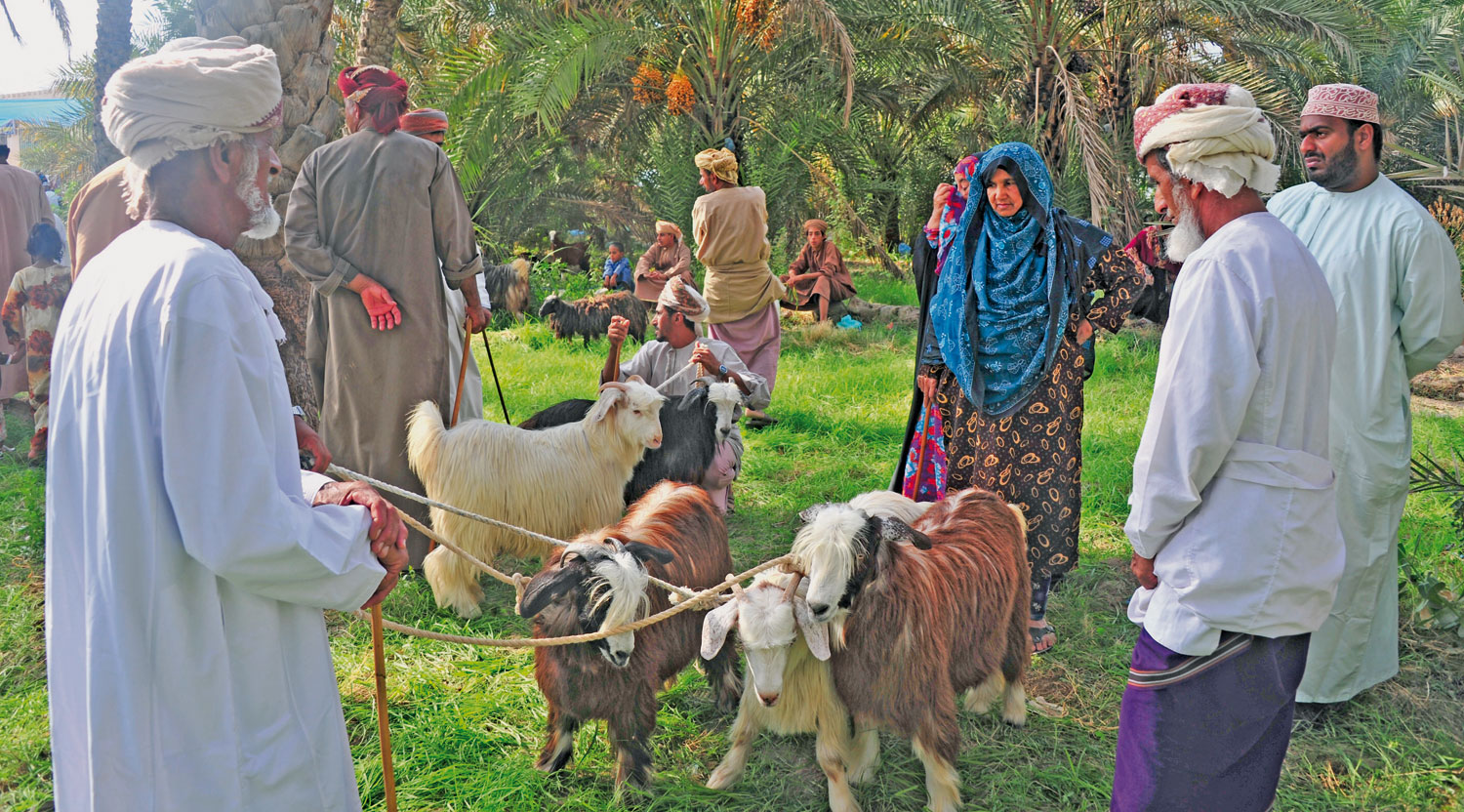

More than a week of habtas – traditional Omani outdoor markets held in the lead-up to Eid – is gradually winding down in towns and villages across the Sultanate, bringing to a close a season that despite the Sultanate’s robust embrace of modernity, still retains much of its time-honoured customs and old-world appeal.
Uniquely Arabian in concept, habtas typically take place in outdoor settings beneath a canopy of date palms far removed from the shopping malls and hypermarkets proliferating across Oman. There are no kiosks, stalls, signboards or any of the trappings of a modern-day marketplace; on the contrary, sellers lay out their merchandise on reed mats or on a grassy surface within these garden settings, while customers browse around looking for stuff of their choice.
Village and towns take turns to host the habta – a practice that allows for buyers and sellers to visit most, if not all, of these traditional markets. Each habta typically kicks off at dawn, with many sellers turning up the previous night zero in on vantage spots in the open-air marketplace. By 11am, market activity begins to thin out, but if the crowds are unusually large, then it’s quite normal to see the habta prolong till about 1pm in the afternoon.
Merchandise on display primarily centres on the traditional Omani household and its inhabitants. Thus, there are dresses and garments for women and children, dishdashas, kummas and turbans for the menfolk, toys and trinkets for kids, ornaments and accessories for girls and women, and other related items for the traditional wardrobe.

Traditional Omani merchandise and produce dominates the habta marketplace for the most part. Taking part in this rustic fair are farmers from, among other places of Oman, Al Jabal al Akhdar and Jabal Shams, where homegrown Omani garlic, yas leaves and lemon, as well as a wide variety of spices and condiments, are highly prized. Also coveted are rugs, drapes and woven items made from goat hair, as well as an array of merchandise fashioned from palm frond.
With traditional sweets an integral part of the Eid celebration, many Omanis offer their distinctive versions of halwa and other local confections. It is not uncommon to stumble upon confectioners toiling over steaming pans of freshly made halwa, while doling out small portions for customers to sample.
Much of the hustle and bustle surrounding habtas is associated with the trade in livestock, encompassing Omani goats, cows and even camels. Tradition-minded Omanis prefer the habta as their source of live, homegrown animals for the Eid sacrifice over meat obtained from malls or retail butcher shops.
Animals are bought and sold in live auctions that take place on the fringes of the habta, with professional auctioneers offering their vocal skills to drive a hard bargain on behalf of the livestock owners in exchange for a modest fee. The auctioneers take turns to parade the animals within an enclosure with prospective buyers gathered around. It’s a spectacle that harks back many generations and centuries, and continues to thrive at habtas in modern times.

price. Demand for locally bred livestock, although relatively pricey, is usually strong because of the taste and quality of the meat in comparison with imported versions.”
Importantly, the habtas are an importance source of income for Omanis whose livelihoods centre around farming, livestock rearing and traditional crafts. Given the enduring popularity of habtas particularly with tradition-minded sections of the local population, many Omani households look forward to these seasonal fairs to secure markets for their homegrown produce. And as the habta season is usually spread across 10 days in the run-up to Eid al Fitr and Eid al Adha, the sellers have the option to transport by pickup any unsold merchandise to the next habta and thereby secure reasonably attractive returns for their produce.
Amer al Rahbi, a native of Suroor on the outskirts of Muscat Governorate, is upbeat about the outlook for habtas. “I’ve been attending habtas for as long as I can remember,” the elderly farmer recalls. “It’s one of the great cultural landmarks of our heritage. Although the turnout was slightly lower at Suroor this season, I understand that habtas at Nizwa, Bidbid, Wadi Bani Khalid, Rustaq and elsewhere, drew large numbers of people. I have no doubt that tradition-minded Omanis, particularly those living in the villages of Oman, will continue to patronize habtas because modern-day markets can never replicate them.”
Text by Hammam Al Badi
Photos by Shamsa Al Harthi
Oman Observer is now on the WhatsApp channel. Click here



